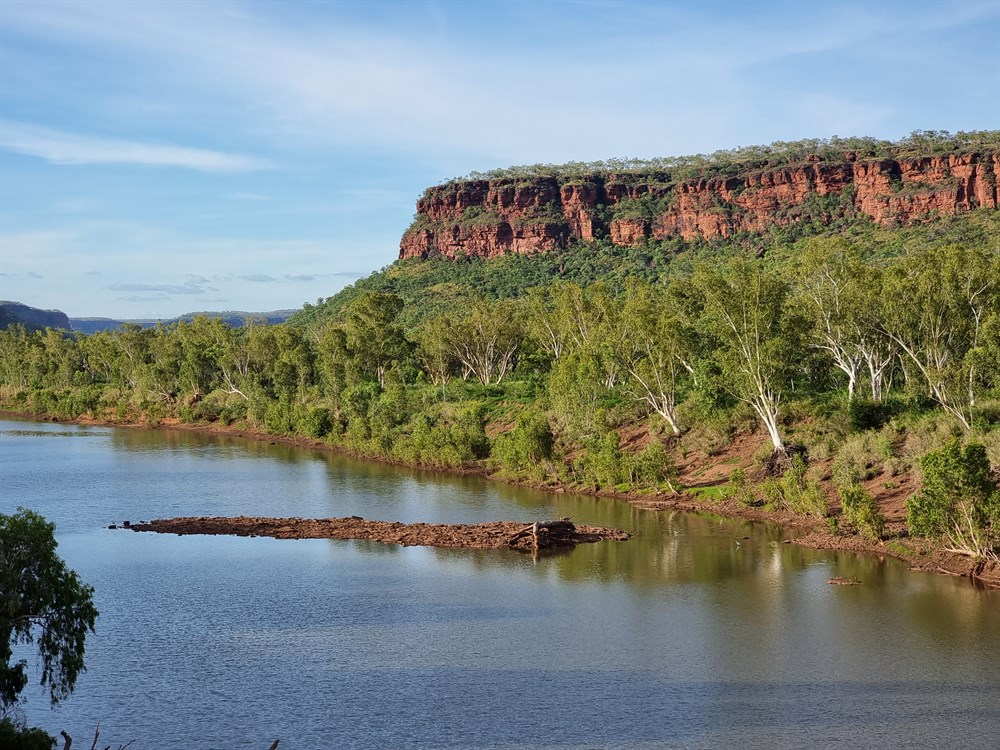Victoria River

Nestled within the heart of Australia’s Northern Territory, the Victoria River flows as a lifeline, not just for the land, but also for the rich tapestry of cultures that call its banks home. Its fifty-six tributaries include the Camfield River, Wickham River, and Armstrong River. For centuries, indigenous peoples have revered this majestic river as more than just a source of sustenance; it’s a symbol of their heritage, spirituality, and connection to the land. In this in-depth exploration, we delve into the layers of cultural significance that enshroud the Victoria River, uncovering the traditions, stories, and customs that have shaped its identity and continue to influence the lives of those who dwell along its shores.
I. Indigenous Connections: Guardians of Tradition
For indigenous peoples of the Northern Territory, the Victoria River holds profound cultural importance, serving as a central hub for community life, spiritual ceremonies, and traditional practices. Through Dreamtime stories and oral traditions, indigenous elders pass down knowledge of the river’s creation and significance, instilling a deep sense of reverence and respect for the land among younger generations. The Victoria River is not merely a geographical feature; it’s a living entity, intertwined with the cultural identity and survival of indigenous communities for thousands of years.
II. Dreamtime Stories and Legends: Unraveling the Mysteries
Central to the cultural significance of the Victoria River is the Dreamtime stories and legends that have been handed down through generations. These stories, often told through song, dance, and art, recount the creation of the river by ancestral beings and the role it plays in shaping the landscape and providing sustenance for life. From the tale of the Rainbow Serpent to the exploits of ancestral heroes, these legends offer profound insights into the spiritual beliefs and cosmology of indigenous cultures, grounding their connection to the land in ancient wisdom and tradition.
III. Cultural Practices and Traditions: Sustaining the Connection
Throughout history, indigenous peoples have maintained a close relationship with the Victoria River through traditional practices and customs. Fishing, hunting, and gathering along its banks are not just economic activities but sacred rituals that strengthen the bonds between people and the land. Likewise, ceremonial gatherings and cultural festivals held near the river provide opportunities for community members to come together, share stories, and celebrate their heritage, ensuring that cultural traditions continue to thrive in the modern world.
IV. European Exploration and Settlement: Shaping Cultural Interactions
With the arrival of European settlers in the 19th century, the cultural landscape of the Victoria River Basin underwent significant changes. Contact between indigenous peoples and European explorers brought about a clash of cultures and traditions, as well as the introduction of new technologies, languages, and customs. Despite these challenges, indigenous communities have continued to adapt and preserve their cultural heritage, incorporating elements of both indigenous and European traditions into their way of life along the Victoria.
V. Modern-Day Perspectives: Nurturing Cultural Awareness and Respect
As we reflect on the cultural significance of the Victoria River, it is essential to recognize the ongoing efforts to nurture cultural awareness and respect among all who interact with this sacred landscape. Indigenous-led initiatives, such as cultural tours and interpretive programs, offer visitors the opportunity to learn about the history, traditions, and worldview of indigenous peoples, fostering a deeper appreciation for the cultural richness of the Victoria River Basin. By embracing the values of cultural diversity and respect for indigenous heritage, we can ensure that the cultural significance of the Victoria continues to be honored and celebrated for generations to come.
Conclusion:
In concluding our exploration of the cultural significance of the Victoria River, we are reminded of the profound connections that exist between people, land, and heritage. From ancient Dreamtime stories to modern-day cultural practices, the Victoria serves as a living testament to the resilience, creativity, and spirit of indigenous peoples and their enduring relationship with the land. As we continue to navigate the complexities of cultural interaction and preservation, let us uphold the values of respect, empathy, and collaboration, ensuring that the cultural significance of the Victoria remains cherished and protected for future generations.
Know More about the Victoria River.
What are The Religious Places of the Victoria River?
When Did The Victoria River Basin Become a Focus?
Where is The Victoria River Located?V
Who Were The Key Historical Figures and Civilizations of The Victoria River?
How to Reach Victoria River?




